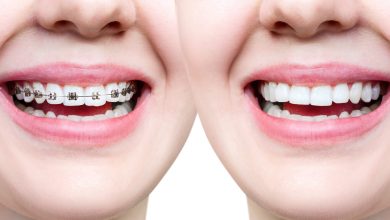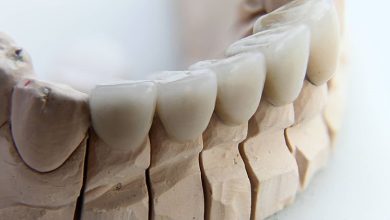What Happens When Your Tooth Decays: Unveiling the Dangers and Consequences

Tooth decay occurs when bacteria in the mouth produce acids that attack the tooth’s enamel, leading to the formation of cavities. If left untreated, tooth decay can cause pain, infection, and even tooth loss.
Cavities are holes or areas of tooth decay that form on the tooth’s surface, and as decay progresses, it can weaken the enamel and compromise the tooth’s nerves, resulting in pain and further damage. It is important to address tooth decay promptly to prevent complications and preserve oral health.
Neglecting a decayed tooth can cause the cavity to worsen, making the tooth more brittle and susceptible to cracking or breaking.
The Start Of Tooth Decay: Understanding The Causes
What Happens When Your Tooth Decays – Tooth decay begins when bacteria in your mouth make acids that attack the tooth’s surface (enamel). This can lead to a small hole in a tooth, called a cavity. If tooth decay is not treated, it can cause pain, infection, and even tooth loss. Decay most often occurs in your back teeth (molars and premolars) which have lots of grooves, pits, and crannies, and multiple roots that make them prone to decay. Cavities are holes or areas of tooth decay that form in your teeth surfaces due to plaque buildup and consuming sugary snacks. Tooth decay can occur when acid is produced from plaque, which builds up on your teeth. It ruins the appearance of teeth and can lead to a person being reluctant to smile. Enamel can repair itself using minerals from saliva and fluoride from toothpaste or other sources, but if the decay process continues, a dentist needs to repair it with a filling. Cavities tend to widen and deepen, making teeth brittle and more prone to cracking.
The Progression Of Tooth Decay: From Pain To Infection
Tooth decay begins when bacteria in your mouth produce acids that attack the enamel, leading to the formation of cavities. If left untreated, tooth decay can result in pain, infection, and possible tooth loss. It is important to address tooth decay promptly to avoid further damage and complications.
| Tooth decay begins when bacteria in your mouth make acids that attack the tooth’s surface (enamel). This can lead to a small hole in a tooth, called a cavity. If tooth decay is not treated, it can cause pain, infection, and even tooth loss. |
|
Untreated tooth decay leading to pain and discomfort Tooth decay ruins the appearance of teeth and that can lead to a person being reluctant to smile due to fears of being judged for the appearance of their teeth. |
|
The risk of infection as decay worsens When teeth have decayed due to bacteria, the excess buildup of bacteria is certain to spread to the surrounding gumline thereby causing an increased risk of infection. |
|
Potential consequences of untreated tooth decay, including tooth loss Cavities tend to widen and deepen, making your teeth brittle and more prone to cracking or even breaking. This can eventually lead to tooth loss if left untreated. |
The Impact Of Tooth Decay On Overall Health
Tooth decay occurs when bacteria in the mouth produce acids that attack the tooth’s enamel, leading to the formation of cavities. If left untreated, tooth decay can cause pain, infection, and even tooth loss. It is important to address tooth decay to prevent further damage and protect overall oral health.
| Subheading | Paragraph |
|---|---|
| The correlation between tooth decay and the appearance of teeth | Tooth decay ruins the appearance of teeth and that can lead to a person being reluctant to smile due to fears of being judged for the appearance of their teeth. |
| Exploring the connection between tooth decay and potential health risks | Tooth decay is damage that occurs to your teeth, which can potentially result in cavities, dental abscesses, or even tooth loss. |
| The importance of regular dental check-ups and preventive measures | Regular dental check-ups play a crucial role in preventing and detecting tooth decay early on. It allows the dentist to identify any signs of decay and take necessary measures to prevent further damage. |
| Lifestyle factors that can contribute to tooth decay | Poor oral hygiene, excessive consumption of sugary and acidic foods and beverages, smoking, and neglecting dental care can all contribute to tooth decay. |
| Treating and preventing tooth decay: Overview of treatment options and homecare tips | Treatment options for tooth decay include fillings, crowns, root canals, and in severe cases, tooth extractions. Preventive measures include practicing good oral hygiene, maintaining a healthy diet, and visiting the dentist regularly. |

Credit: www.timberdentalcolorado.com
Frequently Asked Questions Of What Happens When Your Tooth Decays
Can A Tooth Recover From Decay?
Tooth decay can be repaired by your body’s natural processes with the help of saliva and fluoride. However, if the decay continues, the enamel weakens and forms a cavity that requires a dentist to repair it with a filling. Untreated decay can lead to tooth loss and pain.
What Happens If You Leave A Decayed Tooth?
If you leave a decayed tooth untreated, it can lead to pain, infection, and even tooth loss. Cavities can worsen, making teeth brittle and prone to cracking. The decay also progresses to the tooth nerves, causing severe pain and compromising nerve health.
It’s important to treat cavities promptly to avoid these complications.
How Long Can You Go With Tooth Decay?
Tooth decay can lead to cavities, infection, and even tooth loss if not treated. It can take anywhere from six months to four or five years before a cavity needs treatment, depending on the individual’s tooth enamel.
What Are The 4 Symptoms Of Tooth Decay?
Tooth decay has four common symptoms: 1. Small holes in the teeth called cavities. 2. Tooth pain. 3. Infection. 4. Tooth loss.
Conclusion
Tooth decay is a serious dental issue that should not be ignored. If left untreated, it can lead to pain, infection, and even tooth loss. The bacteria in your mouth produce acids that attack the enamel, causing small holes called cavities.
Decay most commonly occurs in the back teeth, where grooves and pits provide the perfect environment for bacteria to thrive. It is important to seek treatment for tooth decay promptly to prevent further damage and maintain good oral health. Remember, prevention is key, so practice good oral hygiene and visit your dentist regularly to keep your teeth healthy and decay-free.





